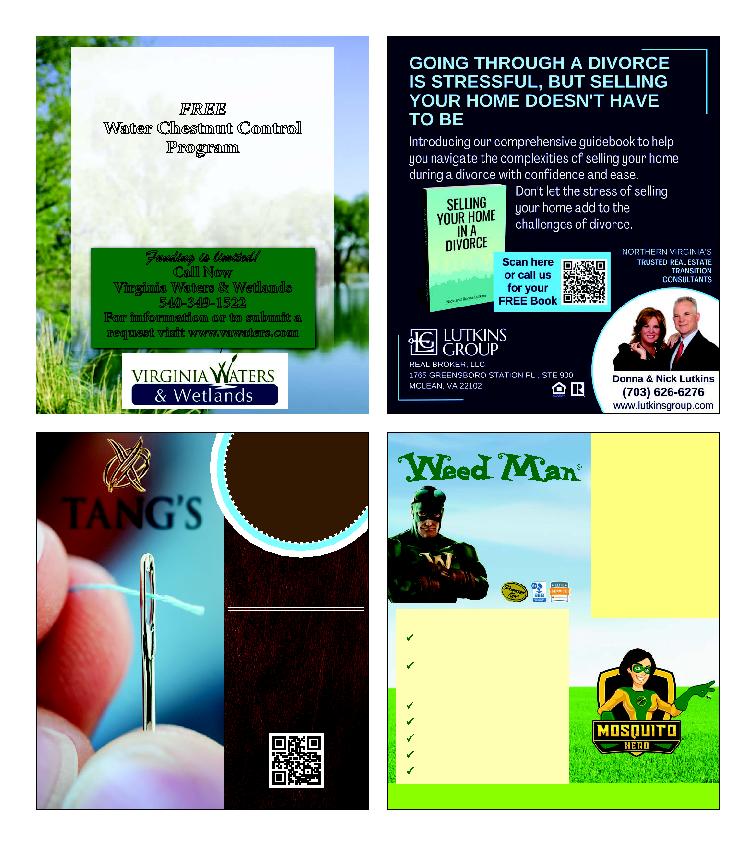
Discover Western Prince William
April 2024
9
360 Waterloo Street, Warrenton, VA
540-349-0617
Monday-Friday 10am-6pm
Saturday 10am-5pm
Closed Sunday
Family Owned
& Operated
Experience
"Customer Service"
at Rankin's
Spin
to Win for Savings
Sa
v
e
Up T
o
25
%
Now through
Saturday, April 27
Delivery Available
VISIT OUR
12,000+ sq. ft.
SHOWROOM
Whether you've been riding horses
most of your life or have never had
the pleasure of visiting a stable or a
riding facility, you're likely aware there
is a difference between Western and
English riding styles, their equipment,
and sometimes even the breed of
horse chosen for each style. The
different riding styles, tack, and
techniques have been developed over
time to serve different purposes.
Western hails from herding livestock
and the needs of cowboys while
English originated in Europe with a
more traditional flair.
Both styles are enjoyable to any rider and require consideration for the work
the horse and rider do together--traveling a long distance, transport, driving
livestock, working in tandem in combat, racing, jumping, or showing. A proper
fitting saddle keeps in mind the movements needed and athleticism required
for the horse to perform its rider's requests. Because horses' spines are
horizontal and riders' spines are vertical, the saddle keeps the rider on their
steed while allowing maximum natural movement of the horse's various
muscle groups for the safety of both horse and rider.
English riding tack keeps the rider in close contact with the horse. Shorter
reins and a lighter, more compact saddle allow for clearer communication
through shifts in weight and leg pressure. This more streamlined connection
is ideal for showing and jumping. Western saddles are larger and provide
better weight distribution over the horse's back when traveling long
distances; they also have a horn to assist roping livestock or for the
rider to grab when barrel racing. Reins are longer to allow for direct
rein cues, making the leg prompts and shifts in weight secondary.
The style many riders prefer can often be deduced by the clothes they
wear while enjoying their equestrian experience. A Western rider can
be seen on their horse in jeans, a comfortable shirt, a hat or sporty
helmet, and cowboy boots while an English rider will don breeches,
gloves, a tucked-in shirt, tall boots, and a hunt cap or helmet.
The horses they ride also have distinctions.
English-style horses are often Thoroughbreds
with longer legs, which allow them to travel great
distances at a variety of speeds and jump over
obstacles with ease. Western horses are often
Quarter Horses, which are more compact and
capable of steady travel with bursts of speed,
and quick changes in direction.
While both English and Western riding styles
have practical differences, riders can be pleasantly
surprised to find there is much to enjoy in both
equestrian experiences! Contact
Silver Eagle
Stable at 703-594-4328 to inquire about your
own riding adventure.
~ Katie Quadrini
Western and English Riding Styles:
What's the Difference?

